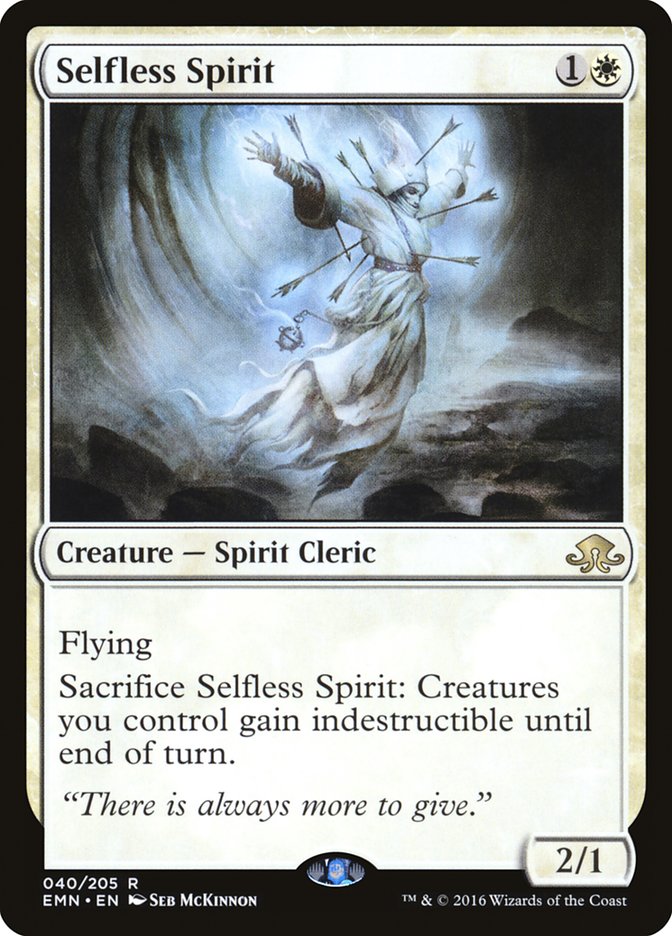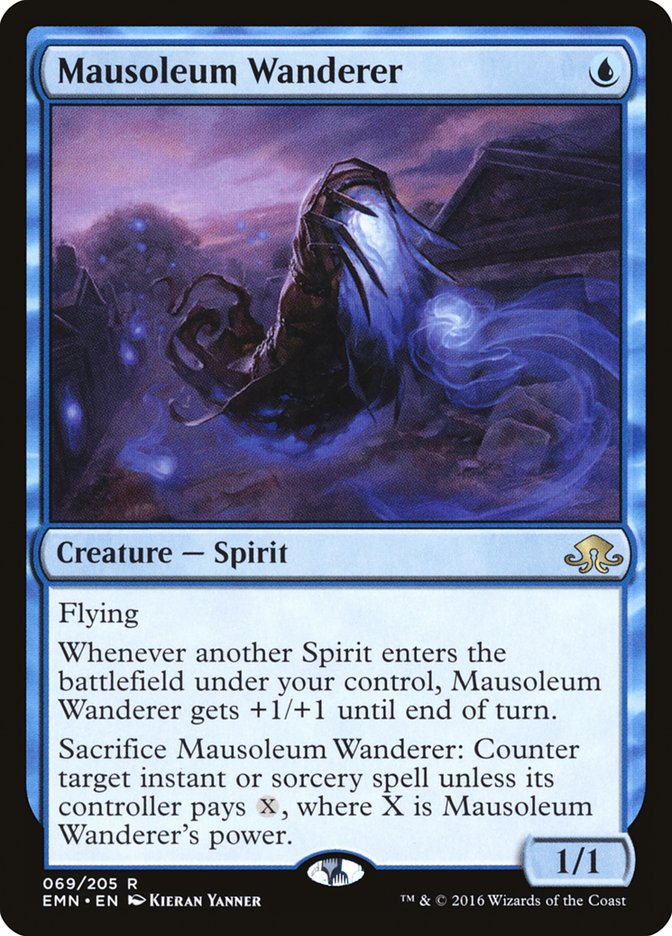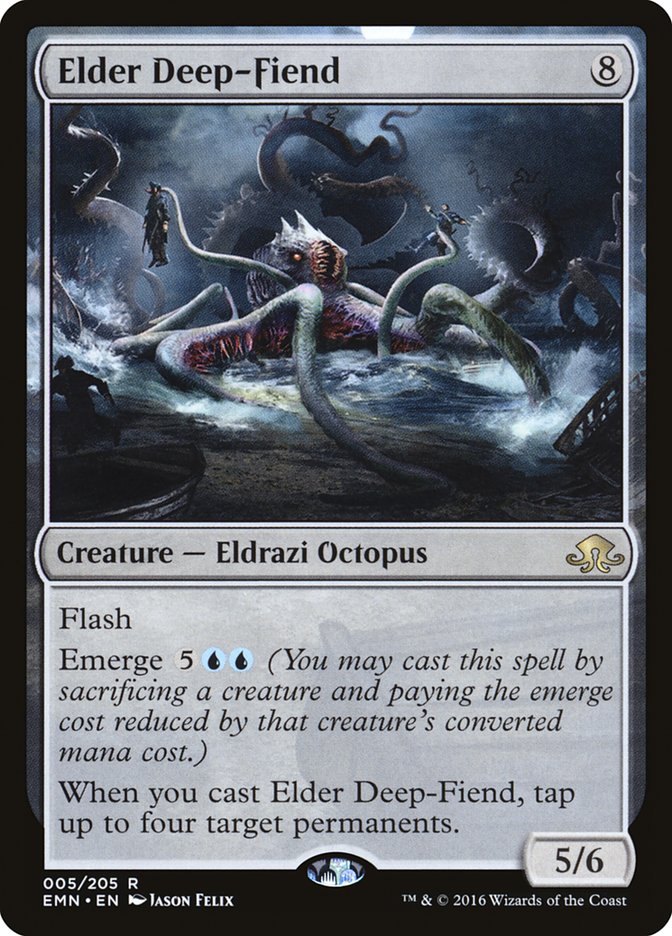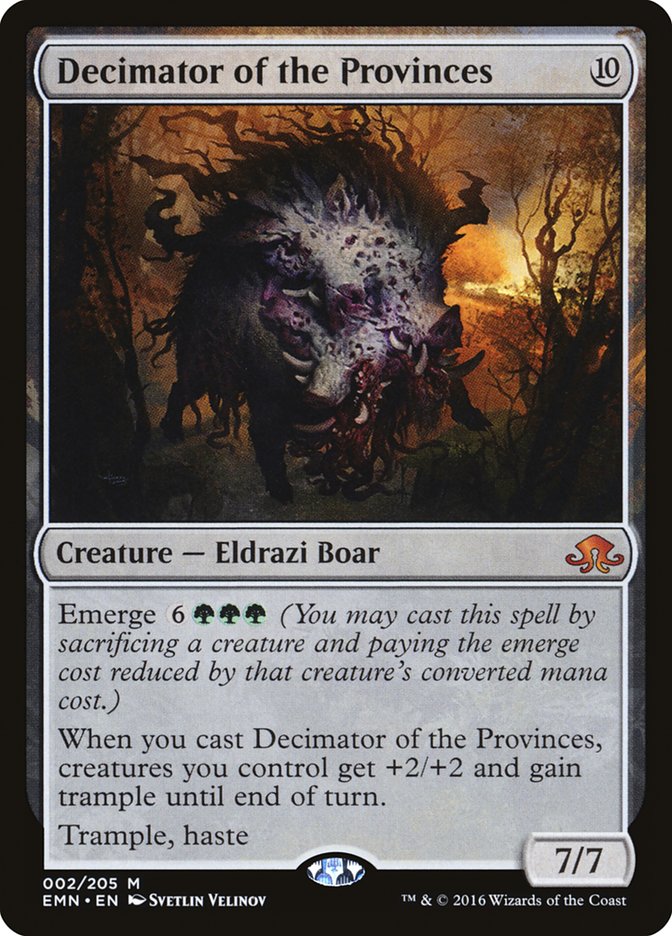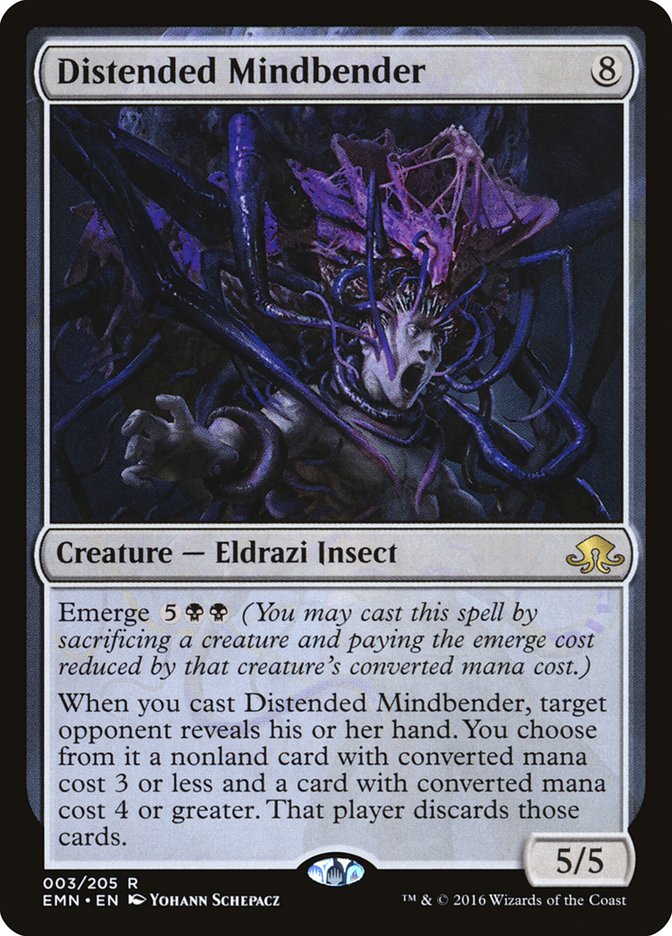Magic oftentimes feels like nothing more than a series of individual decisions that culminate in a loss or victory based on nothing more than a single right or wrong decision. Similar to a test in high school or a job application, a single answer can end up changing an entire match’s outcome or “pass/fail” rate.
Certain kinds of cards tend to create similar questions that can tend to warp a format in a way that feels like a hallway of lasers that only the creators of Mission: Impossible could appreciate. Failing a single question or tripping a single laser so-to-speak spells disaster in an irreparable way.
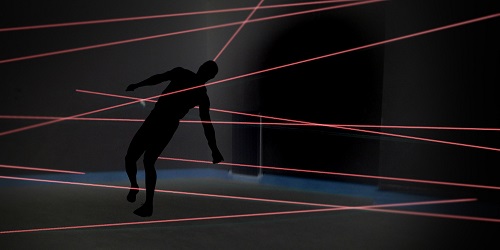
“Can’t play it, it fails the Reflector Mage test.”
“I like Mirrorwing Dragon because it passes the Archangel Avacyn test.”
“Brisela, Voice of Nightmares is great because she passes all of the spot-removal tests in Standard!”
Generally speaking, whenever someone talks about passing or failing a [CARDNAME] test, they are referring to how cards match up in the context of one another. These conversations tend to come up in Standard more than they do any other format because of Standard’s relatively limited card pool compared to Modern, Legacy, or Commander.
Having a smaller group of cards that are legal tends to create a metagame that is primarily comprised of a handful of strategies, as opposed to Modern’s or Legacy’s dozens of reasonable archetypes. These narrower variations of threats and answers create a pseudo-questionnaire of things that a deck must have a reasonable amount of game against.
To piggyback on the aforementioned Reflector Mage example a bit, creatures that cost more than three mana without either flash or some sort of enters-the-battlefield ability have almost been completely pushed out of Standard since Oath of the Gatewatch. Despite Wizards of the Coast really pushing the power levels of efficient creatures in Standard, most of these cards are barely playable–or worse–right now:
These are all creatures that would spell doom for their controller if bounced by a Reflector Mage; doubly so if the creature’s owner has more copies of the same creature in their hand!
The Reflector Mage Test™ is just an example of one of the few litmus tests that dictate what cards and decks are “good enough” for a competitive Standard environment. The next step is determining what other cards, abilities, and synergies need to be answered or beaten in order to be a real player in a format.
A short mental checklist of things that a deck must do in Shadows over Innistrad Standard that I have stuck to pretty religiously is:
• Don’t be too soft to Reflector Mage.
• Be able to attack into Archangel Avacyn mana.
• Don’t fold to a single Languish.
• Play a large enough number of things to do on turn 2 in order to prevent Duskwatch Recruiter from flipping.
• Have enough draws that can reasonably compete with Mono-White Humans’s triple-one-drop draw.
• Make sure a deck’s ability to “goldfish” can reasonably race a ramp deck’s Ulamog, the Ceaseless Hunger.
• Utilize cards that can keep up with a curve of Nissa, Voice of Zendikar into Gideon, Ally of Zendikar.
These don’t even delve into the subgames that certain cards can create. Eldrazi Displacer; Chandra, Flamecaller; and Kalitas, Traitor of Ghet are all cards that tend to warp the entire battlefield around them if their controller gets the opportunity to untap with them, but they generally tend to be powerful cards being slotted into archetypes instead of integral parts of a deck’s strategy.
Eldritch Moon is such an incredibly powerful Magic set that it almost completely changes the paradigm of what can be expected in Standard. The introduction of a single new archetype can create a sort of Butterfly Effect, completely changing the balance of what cards are powerful, playable, and ultimately the actual bullets on the list of tests to pass in Standard.
The most natural application of this idea is shown in the labor of love from Brennan DeCandio & Kevin “The Daddy” Jones in Shadows over Innistrad Standard U/W Spirits:
Creatures (28)
- 4 Knight of the White Orchid
- 2 Anafenza, Kin-Tree Spirit
- 4 Eldrazi Skyspawner
- 4 Reflector Mage
- 3 Bygone Bishop
- 3 Archangel Avacyn
- 4 Thraben Inspector
- 4 Rattlechains
Planeswalkers (3)
Lands (24)
Spells (5)

Even without the additions of upcoming Eldritch Moon cards, Jones managed a finals appearance at the Standard Classic at #SCGWOR. Part of this result stems from how easily this deck can slice through the format’s current big cheese, G/W Tokens. On top of this favorable matchup against the format’s most powerful deck, Spirits gains some powerful new tools in Eldritch Moon.
At a glance these cards are all powerful in their own right, but understanding the roles they serve for the deck takes them to another level.
“Don’t get exiled by Spell Queller” is a pretty tall order, but making sure that a deck can quickly kill Spell Queller may end up being a format necessity. Brian DeMars actually summed up a sort of Catch-22 that may be an upcoming issue in Standard:
Spell Queller punishes you for playing cheap spells. Reflector Mage for expensive ones. Format looks fuuuun
— Brian DeMars (@BrianDeMars1) July 11, 2016
So where do these cards go? One of the exciting (and frightening) aspects of these cards is that a large number of them tend to be good enough on their own. At a glance it is natural to assume that the synergies the cards have amongst themselves would be a more powerful shell to take advantage of their effect, but there are even different shells to build with the goal of making a dedicated Spirits strategy.
Creatures (29)
- 4 Knight of the White Orchid
- 1 Anafenza, Kin-Tree Spirit
- 3 Reflector Mage
- 2 Bygone Bishop
- 3 Archangel Avacyn
- 4 Thraben Inspector
- 4 Rattlechains
- 4 Spell Queller
- 4 Selfless Spirit
Planeswalkers (3)
Lands (24)
Spells (4)

This is a less-refined-but-more-powerful take on Kevin’s list from Worcester and is a great starting point for exploring Spirits. Another take on the deck is much closer to a flash deck than it is a White Weenie deck:
Creatures (26)
- 1 Thunderclap Wyvern
- 4 Dimensional Infiltrator
- 2 Archangel Avacyn
- 4 Rattlechains
- 4 Spell Queller
- 4 Selfless Spirit
- 4 Mausoleum Wanderer
- 3 Nebelgast Herald
Lands (24)
Spells (10)

This version of the deck needs a lot of work but there’s potential here. A good portion of what makes Spell Queller so powerful is the tempo swing that the card generates. Three mana for a 2/3 or a 3/2 has been a pretty common going rate for a few years now, so the body isn’t unsubstantial. The real catch is that, while you’re generating a reasonable body for three mana, a play from the opponent is also being delayed or undone, effectively skipping the developmental portion of the opponent’s turn.
Nebelgast Herald isn’t quite as powerful as the Queller, but it is able to achieve a similar effect when being used to invalidate a creature. Sure, their Sylvan Advocate may have resolved, but how much work is it doing if it gets tapped by a flashed-in Spirit every turn?
The biggest problem I can foresee with this deck is coming back from behind. Archangel Avacyn is a strong way to reset the battlefield (or better; more on that in a moment) or get the Spirits pilot in a favorable position.
One great synergy with Archangel Avacyn that is hard to ignore is how useful it is to have Selfless Spirit protect its team from Avacyn, the Purifier’s Transformation trigger. Selfless Spirit can even be reanimated by Ojutai’s Command to solidify this combo from the deck. Remember that sacrificing Selfless Spirit can trigger Archangel Avacyn’s transformation ability, even if your creatures are already indestructible. The same goes for Mausoleum Wanderer.
Exploring and tweaking this particular archetype is one of the aspects of playtesting for #SCGCOL that I am the most excited about. That being said, Spirits are just one of the many different series of new cards coming out that add new layers to existing archetypes (or create new ones). One of the best ways to combat the threats from Spirits is to try and ignore the questions they’re asking.
Expanding a bit further on the core idea from my article last week, attempting to ignore parts of the game that opponents will likely be favored on is an approach to beating these cards. Playing a deck chock-full of redundant removal spells and threats Reflector Mage doesn’t profitably interact with and Spell Queller can’t favorably exile is one way to stay ahead of the upcoming Azorius shell:
Planeswalkers (10)
Lands (26)
Spells (24)

There may appear to be some suspect card choices in this particular deck (a single Secure the Wastes when preparing for Spell Queller?), but the cards in the deck each serve a role. The extra draws that Read the Bones and Ob Nixilis Reignited provide help find cards at the proper times.
Liliana, the Last Hope may be suspect in a deck without creatures, but her primary role is to use her +1 ability as a sort of crowd control against the hyper-aggressive decks in Spirits and Humans while serving as a buffer against the decks that are low on creatures as well (doing a Jace, Telepath Unbound -2/-0 impression).
The entire goal of this deck is to make the game progress as long as possible while gaining incremental advantages through Oath of Liliana and the deck’s planeswalkers until a planeswalker ultimate or a horde of Zombies can finish the opponent off.
One of the aspects that the B/W Control deck will struggle with out of Eldritch Moon is the creatures with spells built right into them via on-cast triggers:
Distended Mindbender is one of the cards from Eldritch Moon spoilers that really sticks out to me as exceptional. Having a reasonable body stapled to two hand-destruction effects and a cost-reduction mechanic is horrifying for anybody trying to play a control deck.
The deck that Team SCG used for the first weekend of Standard after Shadows over Innistrad became legal was a W/B Eldrazi variant that can likely make great uses of the synergy between Distended Mindbender and Matter Reshaper:
Creatures (22)
- 4 Knight of the White Orchid
- 4 Eldrazi Displacer
- 4 Thought-Knot Seer
- 4 Matter Reshaper
- 2 Archangel Avacyn
- 4 Distended Mindbender
Planeswalkers (7)
Lands (26)
Spells (5)

This particular take on Eldrazi would be absolutely dominant in a majority of midrange wars or grindy mirror matches. Being able to use Liliana, the Last Hope to recur Thought-Knot Seer or creatures that had been used to pay emerge costs is a synergy that has barely been touched upon in spite of the synergy being within Eldritch Moon itself.
In the face of all of the cast-based triggers on the creatures with emerge, being a control deck is going to be even harder than it was before, and it already wasn’t easy.
Let Me Level With You
When developing any kind of list of things that a deck needs to be prepared for, there tends to be some sort of leveling game that occurs.
Level 1: G/W Tokens was the best deck in Shadows over Innistrad Standard.
Level 2: Spirits is good against G/W Tokens due to the high density of efficient flying creatures.
Level 3: B/W Control is good against Spirits because it is able to ignore the aspect of the game that Spirits tries to capitalize on.
Level 4: B/W Eldrazi is good because it is likely able to out-grind the B/W Control deck with incredibly efficient threats that provide card advantage.
In a lot of cases, developing a list comes down to being comfortable with sacrificing some matchups in order to have as many good matchups as possible, a rock/paper/scissors of sorts.
Perusing the Eldritch Moon Spoiler, some possible tests that could very well be a part of new Standard are:
• Have a way to get around an Ishkanah, Grafwidow.
• Play removal spells that don’t wipe your side of the battlefield when used on the opponent’s Mirrorwing Dragon.
• Make sure that instead of just killing Gisela, the Broken Blade, that she actually be exiled instead (in the case that Bruna, the Fading Light is a big part of Standard).
• Play sweepers that can’t be countered by Selfless Spirit.
• Don’t play too many untapped nonbasic lands in the face of Thalia, Heretic Cathar decks.
• Avoid creatures that are soft to Incendiary Flow.
• Aim to play cards that Tamiyo, Field Researcher can’t favorably use her -2 against.
All of these bullet points just represent a sort of give-and-take with deckbuilding that it is easier to accept that not everything can be won, but the odds of success can be maximized. Unless there is a clear head-and-shoulders-above-everything-else best deck, everything will have a weakness. Trying to have the most efficient deck than can interact reasonably with the highest percentage of decks is a sure-fire way to succeed in the long run.
What are some cards that you see making an enormous impact on Standard? How are you preparing for them? What questions are you asking yourself to get ready for Eldritch Moon?




